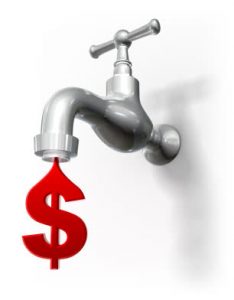Dividend Value Builder Newsletter
Cash Flow Statement Analysis: Purpose, Components, and Format
The purpose of cash flow statement analysis is to attain details of cash inflows and outflows. It is one of three required financial statements of public entities. The other two are the balance sheet and the income statement.
Purpose of Cash Flow Statement Analysis
The purpose of the cash flow statement is to show where an entities cash is being generated (cash inflows), and where its cash is being spent (cash outflows), over a specific period of time (usually quarterly and annually). It is important for analyzing the liquidity and long term solvency of a company.
The cash flow statement uses cash basis accounting instead of accrual basis accounting which is used for the balance sheet and income statement by most companies. This is important because a company may accrue accounting revenues but may not actually receive the cash. This could produce profits and taxes payable but not provide the resources to stay solvent.
Related Reading: Types of Cash Flow & Cash Flow Calculations Guide
Cash Flow Statement Components
The cash flow statement components provide a detailed view of cash flow from operations, investing, and financing:
Cash Flow from Operating Activities
The net amount of cash coming in or leaving from the day to day business operations of an entity is called Cash Flow From Operations. Basically it is the operating income plus non-cash items such as depreciation added. Since accounting profits are reduced by non-cash items (i.e. depreciation and amortization) they must be added back to accounting profits to calculate cash flow.
Cash flow from operations is an important measurement because it tells the analyst about the viability of an entities current business plan and operations. In the long run, cash flow from operations must be cash inflows in order for an entity to be solvent and provide for the normal outflows from investing and finance activities.
Cash Flow From Investing Activities
Cash flow from investing activities would include the outflow of cash for long term assets such as land, buildings, equipment, etc., and the inflows from the sale of assets, businesses, securities, etc. Most cash flow investing activities are cash out flows because most entities make long term investments for operations and future growth.
Cash Flow From Finance Activities
Cash flow from finance activities is the cash out flow to the entities investors (i.e. interest to bondholders) and shareholders (i.e. dividends and stock buybacks) and cash inflows from sales of bonds or issuance of stock equity. Most cash flow finance activities are cash outflows since most entities only issue bonds and stocks occasionally.
Cash Flow Statement Format
Operating Activities:
Net Income
+ Depreciation and Amortization
+/- One Time Adjustments (i.e. investment gains or losses not related to operations, deferred taxes, stock compensation)
+/- Changes in Working Capital
= Cash Flow From Operations
Investing Activities:
+/- Net Capital Expenditures
+/- Net Investments
= Cash Flow from Investing Activities
Financing Activities
– dividends
+/- sale or purchase of company stock
+/- net borrowings
= Cash Flow from Financing Activities
Summary of Cash Flow Activities:
+/- Cash Flow From Operating Activities
+/- Cash Flow From Investing Activities
+/- Cash Flow From Financing Activities
= Net Change in Cash
+ Beginning Cash Balance
= Ending Cash Balance
Note: You should be able to reconcile the Net Change in Cash with the cash balances reported on the Balance Sheet.
Investment Analysis Summary
The cash inflows and cash outflows in the cash flow statement are segmented into cash flow from operations, investing, and financing. These details provide insight in the liquidity and solvency, as well the entities ability to meet future needs for capital and growth.
Additional Reading:
Intrinsic Value Stock Analysis – My Formula
Interested in Intrinsic Value Stock Analysis?
Minimize Large Portfolio Drawdowns
Invest With Confidence in Less Time - Manage Your Portfolio Without Behavioral Errors

